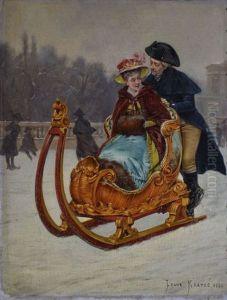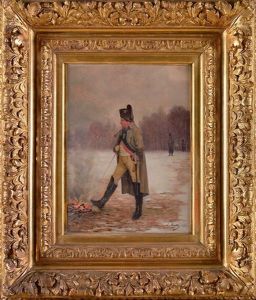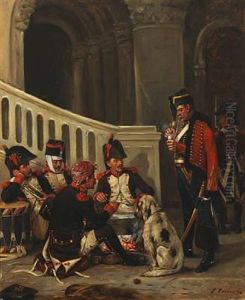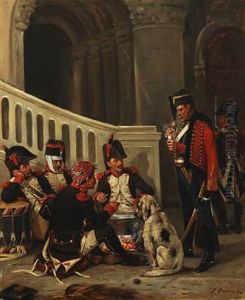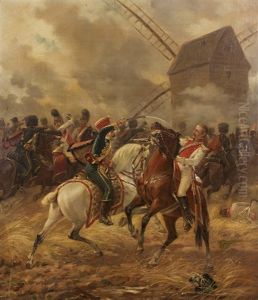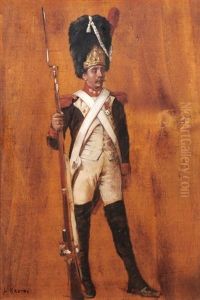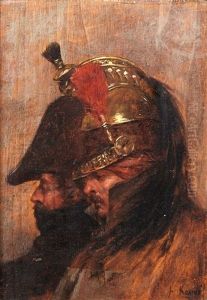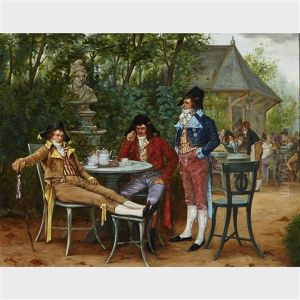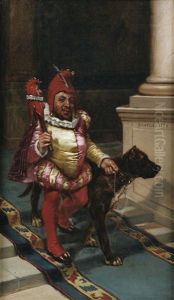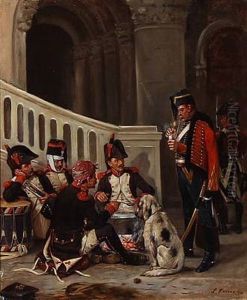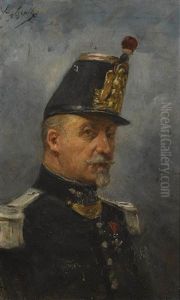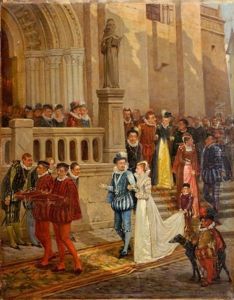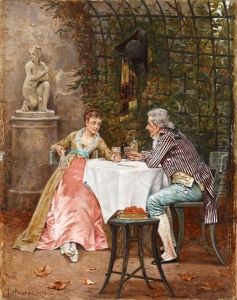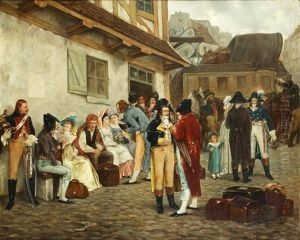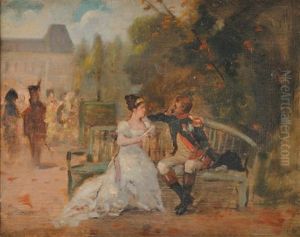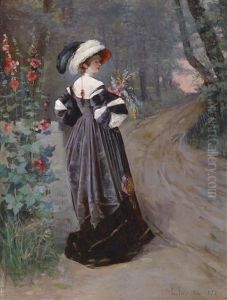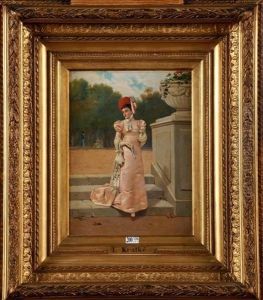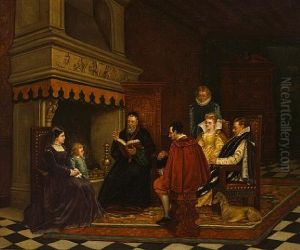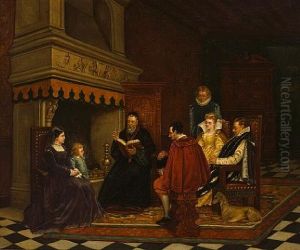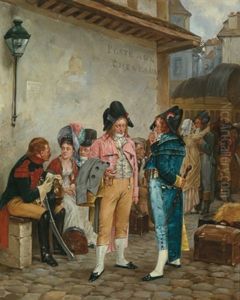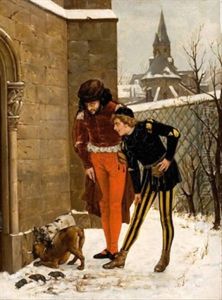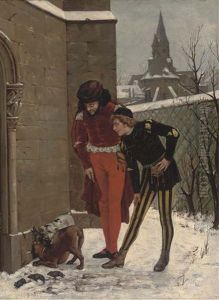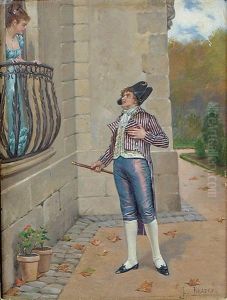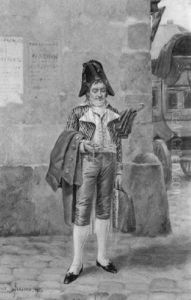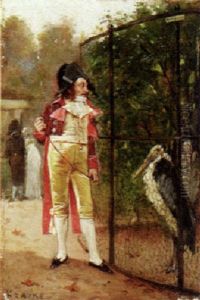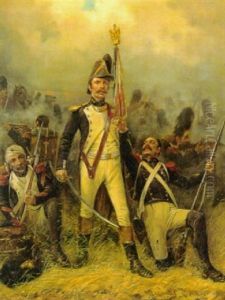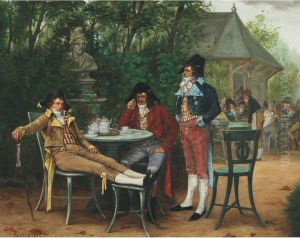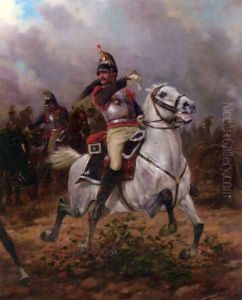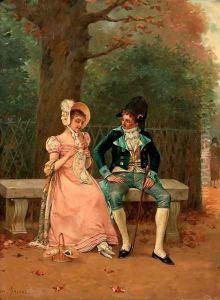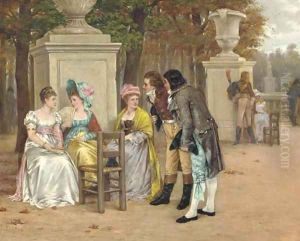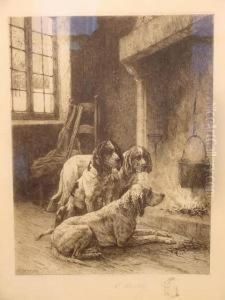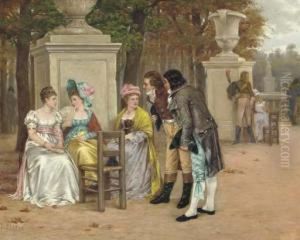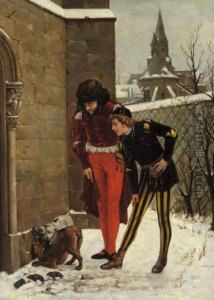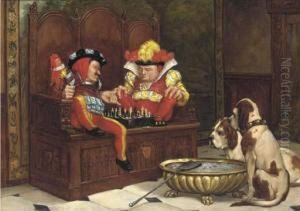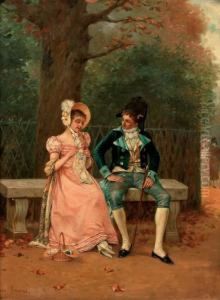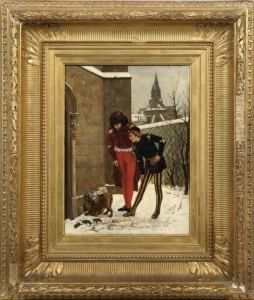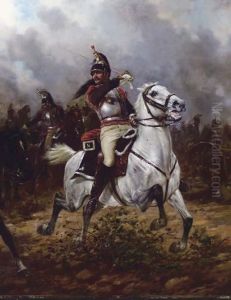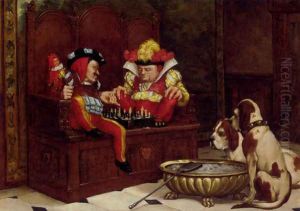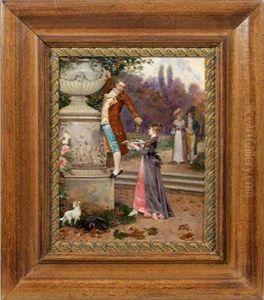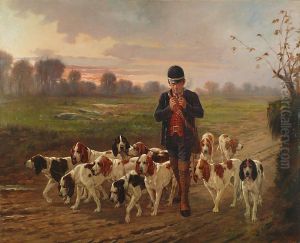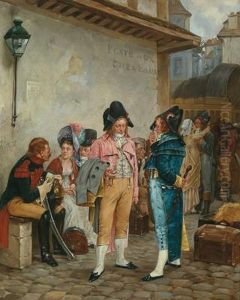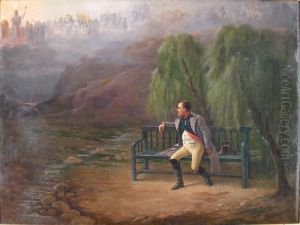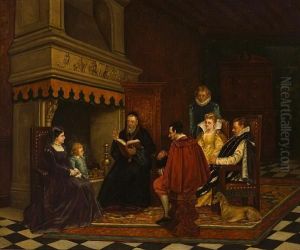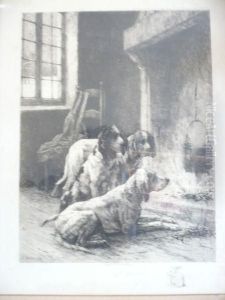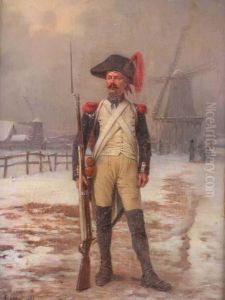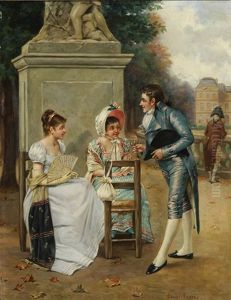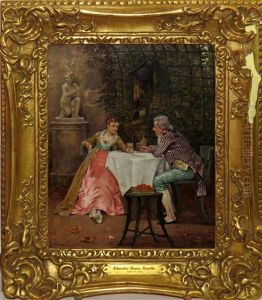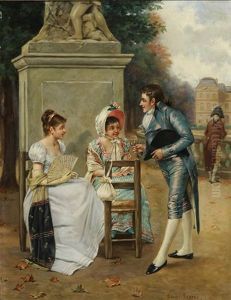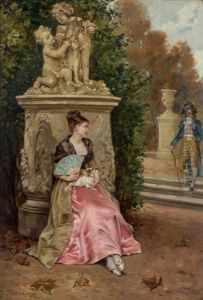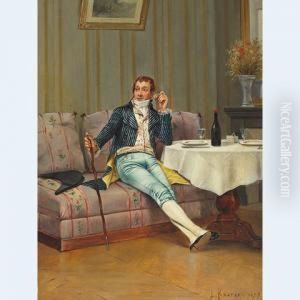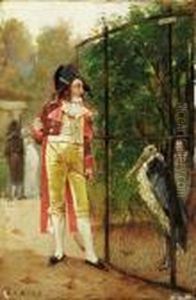Charles Louis Kratke Paintings
Charles Louis Kratke was a 19th-century French painter known for his genre scenes and landscapes. Born on December 23, 1848, in Besançon, France, Kratke developed an interest in art at a young age and pursued his passion by studying at the École des Beaux-Arts in Paris. He was a student of Isidore Pils and Henri Lehmann, who were prominent artists of their time and had a significant influence on Kratke's artistic development.
Kratke's work is characterized by its attention to detail, vibrant color palette, and often romantic portrayal of rural and urban life. He excelled in depicting the bucolic countryside of France, infusing his landscapes with a sense of tranquility and nostalgia. His genre scenes often captured the everyday life of the French people, from peasants to bourgeois society.
Throughout his career, Kratke exhibited his works at the Paris Salon, an annual art event that was the official art exhibition of the Académie des Beaux-Arts in Paris. His paintings received positive reviews and garnered attention from art collectors and the public alike. Kratke's ability to evoke emotion through his art made him a respected figure among his contemporaries.
Despite his success, Charles Louis Kratke remains a lesser-known artist compared to other giants of French painting from the same era. Nevertheless, his contributions to genre and landscape painting are noteworthy, and his works are preserved in various museums and private collections. Kratke continued to paint until his later years, leaving behind a body of work that reflects his dedication to capturing the essence of 19th-century France.
Charles Louis Kratke passed away on May 23, 1921. His paintings continue to be appreciated by art enthusiasts and historians, serving as a window into the past and offering insight into the lifestyle and environment of his time.
